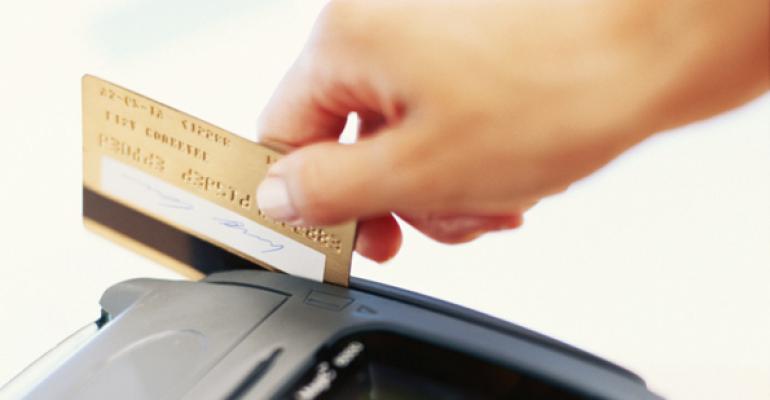Today’s small- and mid-sized restaurants understand the value of offering a loyalty program that does everything loyalty is supposed to do: recognize and reward diners for their patronage, increase sales, attract new patrons and encourage existing guests to visit more frequently.
But small and medium-sized restaurant owners and managers also often share the same challenge. Quite simply, they are often too busy with the day-to-day demands of running the business to also run an effective loyalty program.
First, they often do not have the right in-house resources needed to create, launch and support a robust loyalty program. Second, their technology and mobile capabilities are either limited, not up to par with customers' expectations and behaviors—or both. Third, they often don't have insights into how their guests contribute to their overall success.
Fortunately, the payments evolution is offering solutions. As consumers shift away from loyalty key fobs or punch cards toward mobile wallet payments and loyalty- and offer-enabled credit-debit cards, the power of card-linked offers (CLO) can build customer loyalty, trial and adoption and data insights for restaurants—while also providing valuable rewards to consumers. According to recent research and consumer surveys, this CLO framework provides increased revenue opportunities to restaurateurs while delivering the types of valuable rewards that diners want.
Payment cards function as membership cards
CLOs solve the challenges on several fronts. Recent Deloitte research showed that restaurant loyalty programs tend to be vastly underused—typically because consumers are unaware they exist or are not invited to join. They also represent a huge commitment to educating front-of-house staff about loyalty program criteria and nuances. Those obstacles, however, are mitigated when the act of earning rewards is seamlessly built into the payment transaction itself.
The CLO concept is straightforward. The loyalty program itself is operated by a loyalty program specialist—a company that works directly with restaurants and retailers to manage, market, advertise, launch and support the issued rewards.
During the sign-up process, restaurant customers link their payment cards directly to the loyalty program. Each time they swipe, tap or scan to pay a restaurant bill, the earned rewards are automatically deposited into a cumulative rewards account waiting to be redeemed. Customers can typically earn cash-back rewards, or they can receive loyalty rewards in an alternative currency—such as cents-per-gallon discounts on fuel at the pump.
Customers' credit and debit cards, in effect, become de facto membership ID cards in the restaurant's loyalty program. Each qualified payment funnels rewards into the customers' account, and the restaurant owner or franchise lets the loyalty program administrator handle operational details: implementation and IT setup, offers, marketing, personalization, communications, customer service issues, data collection and the like.
Aided by the ability to track members' engagement and spending patterns, restaurants can work with the loyalty program to personalize marketing communications and target promotions based on what works. And instead of devaluing the brand with never-ending discounts or coupons, restaurants strengthen the value of their brands by building rewards directly into each transaction. Some of the benefits of the CLO model include:
• Customers accumulate rewards with every visit. The frequency with which customers earn rewards has a direct impact on their ability to redeem. According to Forrester, about 35 percent of rewards issued industry-wide are never redeemed, while separate data shows that 75 percent of fuel savings rewards are redeemed within 60 days.
• The CLO administrator executes the promotion, rewards issuance, tracking and data analysis on the restaurant's behalf so that marketing efforts can be fine-tuned based on customer response.
• Restaurants can focus their resources on providing premium experiences that include great food and great service.
Meeting the mobile challenge
The CLO framework also serves as a tool to enable loyalty rewards, especially as customer payment behaviors shift from cash to plastic cards, mobile payments, digital wallets and mobile apps. According to Deloitte, nearly 20 percent of restaurant patrons have downloaded a mobile app to perform the following functions: 55 percent use it to check menus and prices, and 46 percent check for hours of operation. CLOs allow a restaurant's mobile app to also keep track of earned rewards—a quick and always-present way to stay relevant and connected with customers.
The reassuring news is that operators of small- and medium-sized restaurants can launch loyalty programs that do not overburden their resources but do improve sales and the bottom line. This is how CLOs can serve as an underlying power source for a restaurant’s growth.
Megan Flynn is executive v.p. of program development, brand & communications at Excentus, provider of the Fuel Rewards program. She develops loyalty and marketing solutions that facilitate incremental, value-added growth for local, regional and national merchants.





